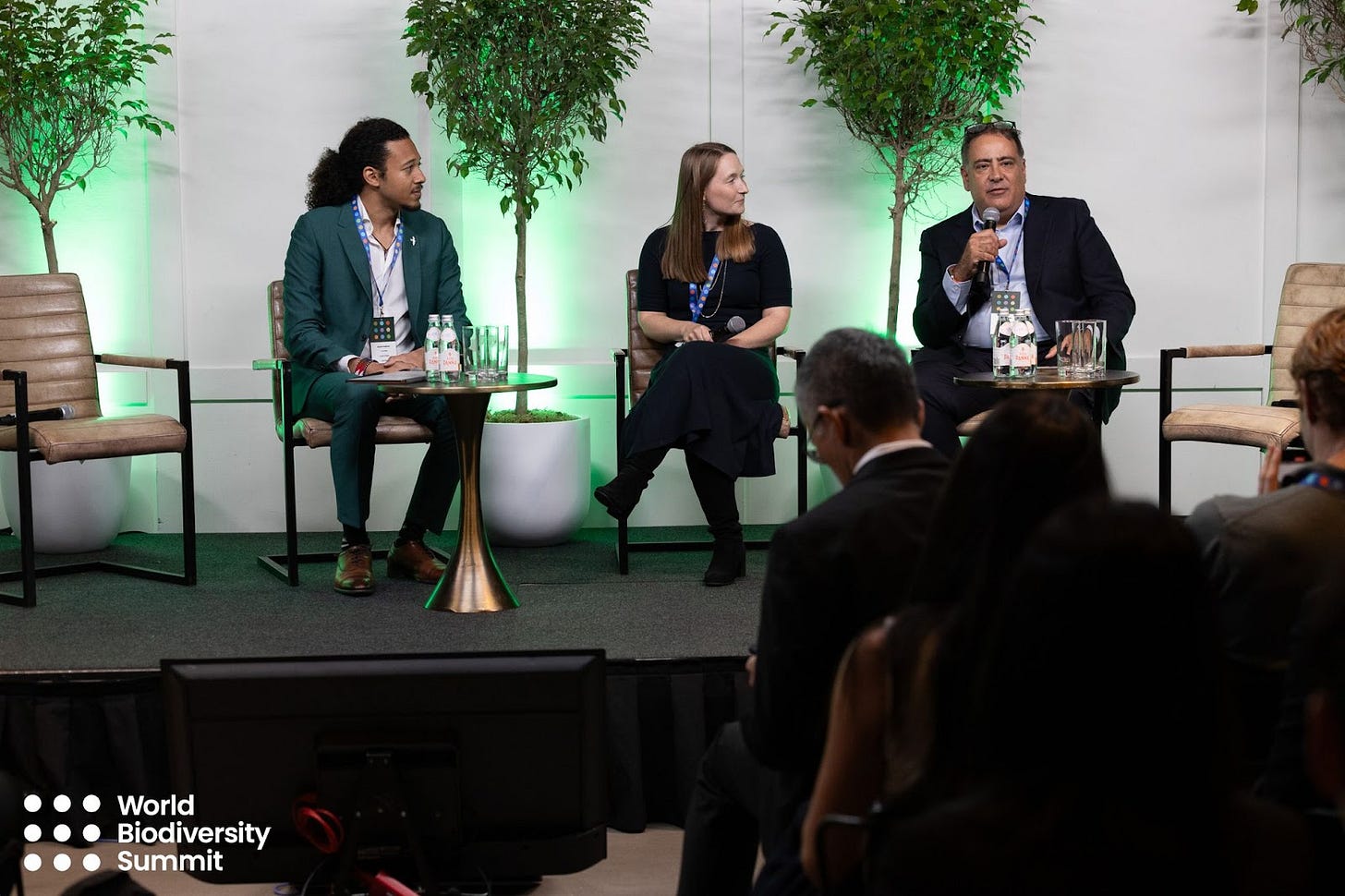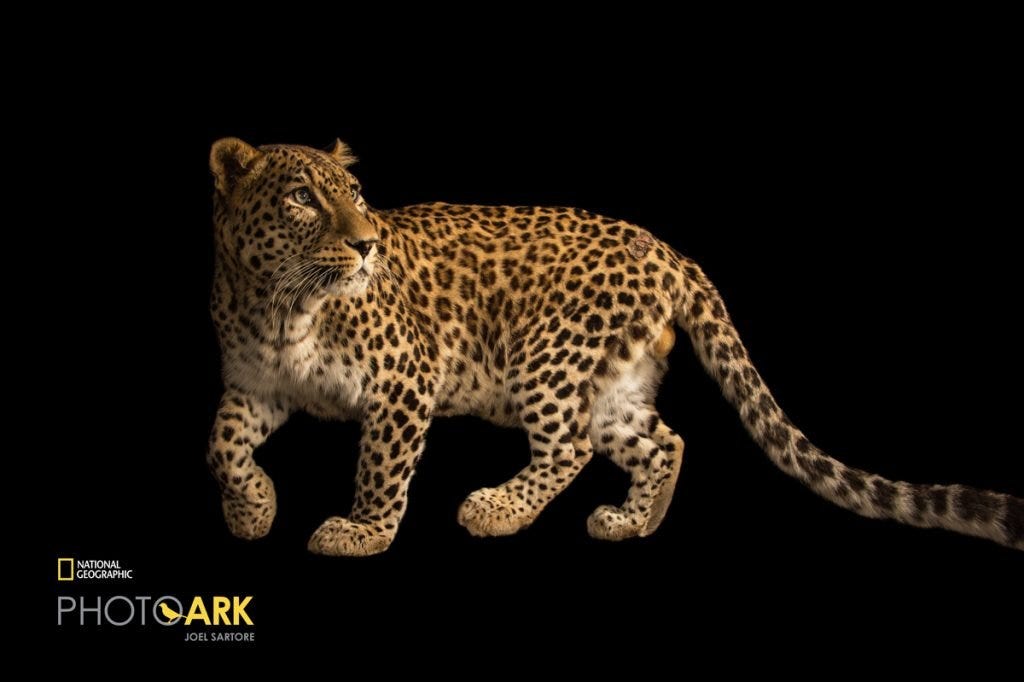What Technology Can Do for Protected Areas
We report back from Climate Week NYC, launch the Fire Grand Challenge in Western North America, announce our CXTP finalists, and take you deep into the Peruvian Amazon.
✍🏼 A Letter from the CXL Team
Wow, what a week! Our team just returned from Climate Week NYC, and the energy in the city was nothing short of electric. If it wasn’t as evident before how inextricably linked the climate and biodiversity crises are, this year the role of nature was a central and driving force across the events, conversations, panels, and efforts of Climate Week NYC. It was a whirlwind of rich and important discussions, meaningful relationships built, and partnerships considered and formed. Our team was in dozens of places (often seemingly at the same time): we had Daphne participating in forums such as the Ford Foundation’s “From Commitment to Action” on funding for Indigenous Peoples, Liam joining the Forest Restoration Leadership Forum hosted by 1t.org, and Rolando engaging in the LAC Lab Networking event by the Global Innovation Lab for Climate Finance.
To conclude the week, Alex spoke on a panel at the World Biodiversity Summit titled “Innovation at the Intersection: Dual Benefits for Nature and Economy”—highlighting the critical role of emerging technologies in conservation, sustainable development, and business growth.
Though it was Climate Week NYC, we know climate change and biodiversity loss are two sides of the same coin. As biodiversity loss intensifies, it degrades ecosystems’ ability to capture and store carbon, regulate temperature, and circulate air and water—further amplifying climate impacts on nature, people, and economies. As CXL has been advocating for years, biodiversity can play an outsized role in solving the climate crisis as well. Together, this underscores the importance of our third big bet: Protect Wild Ecosystems Effectively.
Because the ineffective management of protected areas is failing to prevent biodiversity loss, habitat degradation, and illegal activities such as poaching and deforestation, we must act to leverage technology and strategic partnerships to neutralize threats increase the efficiency of protected area management – from habitat destruction to invasive species – ensuring that these critical ecosystems are effectively safeguarded by conservationists who are equipped to move at the speed of the threats.
While we are encouraged by the 2022 adoption of the Global Biodiversity Framework (GBF) by 196 countries, this global commitment is just the beginning. It requires urgent action from all sectors—private companies, non-profits, governments, research institutions, and individuals—to meet its four goals and 23 targets. This is where innovation becomes critical, and where we are taking action and leveraging technology to make conservation more effective.
For example, we’ve recently deployed our Sentinel technology in the Peruvian Amazon, enhancing the ability to monitor protected areas efficiently. We are excited to share a short documentary about that deployment below. Additionally, our Wild Me lab has made significant advancements, allowing us to monitor species like never before, through open-source software and SaaS solutions. Wild Me’s community of conservationists is growing rapidly, and this quarter, we are proud to feature one of our users who is making waves with the 'Spot A Shark USA' initiative, a testament to how these tools are enabling more conservationists to collaborate globally.
Yet, the work ahead of us is immense. We need to accelerate the deployment of these technologies in the field, empowering local communities and conservationists to take immediate, informed actions to protect our planet’s biodiversity. Together, we must ensure that the promises of the Global Biodiversity Framework become a reality, to turn back the threats causing the climate and biodiversity crises. Conservation X Labs is committed to helping lead the way.
Thank you for your continued support, and as always, we urge you to…
Dare Mighty Things,
The CXL Team
From the CXL Home Office
🔥 The Fire Grand Challenge Launches in Western North America
On August 8, we kicked off the Western North America edition of the Fire Grand Challenge, calling for global innovators to submit groundbreaking solutions to revolutionize how we live with and manage fire. With $630,000 in prizes and support available, the challenge seeks innovations that combine advanced technology with Indigenous, rural, and place-based knowledge. This initial round focuses on Western North America, including the western United States, Canada, and Mexico, thanks to the support of the Moore Foundation, Esri, USAID, and Planet. Applications are open until December 2, 2024.
The Challenge is hosting a 3-part webinar series titled Igniting Innovation. We invite you to join future sessions, where we will dive deeper into how innovators can contribute to solving the fire crisis through creative solutions and impactful innovations. The next webinar, "Indigenous Stories on Fire," will take place on October 10 at 2:00 pm. ET. This session will uplift Indigenous voices in fire management and connect with leading cultural fire practitioners. Register for the series here.
🏆 Sentinel Wins World Economic Forum’s UpLink Biodiversity Challenge
In August, Conservation X Labs’ Sentinel was selected as a 2024 Top Innovator in UpLink - World Economic Forum 's Biodiversity Challenge! This incredible recognition highlighted our work in promoting the conservation, protection, and restoration of biodiversity. Out of hundreds of submissions from around the world, Sentinel stood out as one of the most promising solutions driving progress for the health of terrestrial ecosystems. Sentinel has been developed and made field-ready by our incredible team, comprised of our co-Founders Alex Dehgan and Paul Bunje, as well as our Head of Product Henrik Cox and Lead AI Researcher Dante Wasmuht, Project Lead Sam Kelly, Senior Machine Learning Engineer Peter Bermant, Software Engineer Brandon Asheim, and Adam Elzinga. This milestone fuels our mission to prevent the sixth mass extinction.
🌳 Con X Tech Prize Names Twenty Finalists for Prototype Round
In July, we announced the 20 finalists for this year’s Con X Tech Prize (CXTP), showcasing innovative solutions to transform industries in the Amazon. This round focused on two key themes: replacements for food, feed, fiber, and materials, and sustainable production methods for these replacements. Notably, the competition prioritized teams with members from the Amazon region. The 20 finalists, selected from 112 applications across 30 countries, include teams from Peru, Colombia, Ecuador, Brazil, and the United Kingdom. You can learn more about our global campaign in our blog.
Each finalist has received a USD 3,500 seed grant to develop their prototypes, competing for a grand prize of USD 20,000 and two runner-up prizes of USD 5,000. Beyond the cash awards, winners are receiving continued mentorship to help bring their solutions to market. The final winners will be announced this November.
CXL Research Updates
🧬 NABIT Team Publishes Groundbreaking FUSE DNA Extraction Paper
Members of our NABIT team, Hal Holmes and Misa Winters, alongside Virginia Tech partners, published a groundbreaking paper in Forensic Science International: Genetics. This work introduces the FUSE (Focused Ultrasound Extraction) technology, a revolutionary method for DNA extraction. This innovation drastically reduces the time required to release DNA from timber cells, making it possible in minutes rather than hours. This represents a significant advance in forensic science and conservation efforts. You can access the paper here.
📰 CXL-Authored Extinction Solutions Index Paper Published in British Conservation Journal
In July, we released a pivotal perspective in the British Ecological Society titled "The Extinction Solutions Index (ESI): A framework to measure solution efficiency to address biodiversity loss." The perspective outlines our innovative approach to combating global biodiversity loss. Written by CXL’s Rachel Martin with co-authors Paul Bunje and Alex Dehgan, the perspective introduces the ESI's seven conceptual elements and proposes strategies to reduce threats to biodiversity, restore ecosystems, and incorporate socioeconomic interventions, distinguishing this approach from existing conservation methods. Read the paper here.
🐾 Insights from Wild Me
We're thrilled to highlight an exceptional quarter for Wild Me, marked by groundbreaking research and increased visibility within the scientific community. Explore recent Publications and Data Contributions:
A landmark paper on climate warming's effects on large marine ectotherms was published on Science Direct using data from Sharkbook.
The Whiskerbook platform has yielded its first Ocelot-focused paper on Mammalogy Notes, marking a significant milestone in feline research initiatives.
MantaMatcher.org data has been instrumental in a new, independent study, validating the importance of our collaborative approach to marine research.
CXL’s Chief Data Officer Officer and Director of Wild Me, Jason Holmberg, also appeared on the Pawsitive Podcast to explore a fascinating topic: Can AI really help save endangered species? Listen to the episode here:
🐆 Central Asia Wildcats Program in National Geographic
Our Director of Central Asia Programs, Tanya Rosen, was featured in National Geographic Kazakhstan. Her article highlights the urgent endangerment of Persian and Snow leopards, which have lost 70% of their historic range. With fewer than 60 Persian leopards remaining in Turkmenistan, our Central Asia Program is working with the Balkan Department of the Environment to expand protected areas.
🔥 Photo Feature: Celebrating the Fire Grand Challenge in Northern California
In collaboration with the Gordon and Betty Moore Foundation, we were thrilled to host a private launch celebration for the Western North America edition of the Fire Grand Challenge on September 15, in Sebastopol, California. This significant event gathered our esteemed partners for an evening dedicated to advancing wildfire innovation and resilience. A group of attendees also had the exclusive opportunity to join LightHawk for an overflight of Sonoma County, which has been profoundly impacted by fire, providing a unique perspective on the aftermath of the devastating Tubbs fire of 2017 and ongoing cultural burning restoration sites.
Spotlight from the Field
🦈 Spot A Shark: Revolutionizing Sand Tiger Conservation with AI
Wild Me’s powered platform, Wildbook, plays a crucial role in the Spot A Shark USA program, which tracks sand tiger sharks off North Carolina’s coast. Leveraging AI, the platform identifies individual sharks from photos submitted by scientists and citizen divers, allowing for non-invasive research. This technology has enabled researchers to gather valuable insights on shark behavior, reproduction, and habitat without traditional tagging methods. With nearly 3,000 individual sharks in its database, Spot A Shark has become a cornerstone of sand tiger conservation. Wild Me’s innovative platform is driving collaboration between scientists and the public, transforming how vulnerable species like sand tigers are studied and protected.











